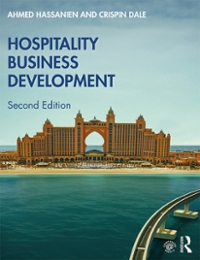Question
Context The beginning of the 21st century has seen the rising of social innovation (SI) as a practical solution for tackling social, political, economic, and
Context
The beginning of the 21st century has seen the rising of social innovation (SI) as a practical solution for tackling social, political, economic, and environmental challenges such as poverty, ageing, mental health, migration, or climate change, among others. As a citizen of your country and a global citizen, you aspire to develop your own social innovation to address social issues that you are most concerned about. In this research, you will have the opportunity to review and learn from an existing, real-life SI venture and apply the knowledge in social innovation and community engagement that you have obtained in this unit. Doing this will start you on a solid path to your own social innovation to address a social issue you are most concerned about and join the worldwide effort of a countless other social innovators to bring justice to those most marginalized and advance the common good.
Instructions Explain in (1500-1700) word report reviewing Fire to Flourish, a social innovation (SI) aiming at helping bushfire affected communities lead their own recovery and develop their own resilience. The SI was developed in partnerships with The Australian Centre for Social Innovation (TACSI), Monash University, Paul Ramsay Foundation (PRF), Metal Manufacturers Limited and four bushfire-affected communities in New South Wales and Victoria. You are to apply the theories of social innovation (SI), community engagement (CE), Corporate Social Responsibility (CSR) and the CST principle of the Common Good (CG) you have learnt in the unit to: 1. Evaluate Fire to Flourish from the SI perspective. Consider questions such as: What is Fire to Flourish? What social issue is it trying to address? How can it address that social issue? What SI type(s) does it belong to (consider all typologies discussed in the unit)? What "innovative" about its approach? Why is it necessary? How can it sustain itself? What could be the roles of businesses - considering CSR, and governments in addressing this social issue? In Fire to Flourish's sustainability? 2. Evaluate Fire to Flourish from the CE perspective. Consider questions such as: Has community engagement (CE) has been used in this SI? Why and how? Can you identify the CE characteristics and principles reflected in its approach? Can you recognise the CE type(s) this SI belong to? What CE strategies and techniques have been used? Have they been used appropriately, given its types? How effective has CE been applied in this SI? How can this SI contribute to the common good? 3. Make recommendations for Fire to Flourish as it proceeds to the next stages. Consider questions such as: What is its current stage of SI development? Do you think it can move to the next stage? Do you think it can scale up for other communities in Australia? What may help or hinder that process? What should be strengthen? What should be weaken?
Format and Structure
- Executive summary (150-200) Introduction (150-200) Evaluate Our Town from the SI perspective (600-700) Evaluate Our Town from the CE perspective (600-700) Recommendations (350-400) Conclusion (150-400) References
Step by Step Solution
There are 3 Steps involved in it
Step: 1

Get Instant Access to Expert-Tailored Solutions
See step-by-step solutions with expert insights and AI powered tools for academic success
Step: 2

Step: 3

Ace Your Homework with AI
Get the answers you need in no time with our AI-driven, step-by-step assistance
Get Started


